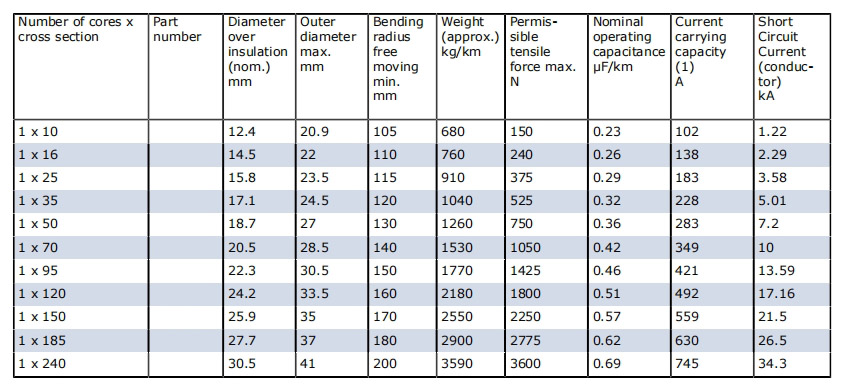
(N)3GTMC11Y 6/10KV Medium voltage Polyurethane cable represents a significant advancement in cable technology, specifically designed for medium voltage applications requiring both high electrical performance and extreme mechanical durability. This article delves into the structure, features, and applications of the (N)3GTMC11Y polyurethane cable, and provides a comparative analysis with the NSHTOU cable, highlighting their unique capabilities and suitable applications.
Conductor: The (N)3GTMC11Y cable features a finely stranded copper conductor that ensures excellent conductivity and flexibility. The conductor is typically tinned to enhance corrosion resistance and improve its longevity in harsh environments.
Insulation: This cable uses EPR as its primary insulation material, which is crucial for medium voltage applications. It also provides excellent thermal stability and resistance to electrical aging.
Sheathing: The most distinctive feature of the (N)3GTMC11Y cable is its robust polyurethane (PUR) outer sheath. PUR is selected for its superior resistance to abrasion, oil, chemicals, and various weather conditions, making it an ideal choice for challenging industrial environments.
While both (N)3GTMC11Y and NSHTOU cables are designed for tough industrial applications, there are notable differences that define their specific suitability:

(N)3GTMC11Y 6/10KV Medium voltage Polyurethane cable stands out for its superior electrical performance, robust construction, and versatility in harsh industrial environments. Its comparison with NSHTOU highlights that while both cables are highly durable, the choice between them should be guided by the specific requirements of the application, including voltage needs, environmental conditions, and mechanical stress factors. Choosing the right cable ensures optimal performance and longevity, enhancing safety and efficiency in any industrial setup.
Name: Lucky Li
Mobile:+86-18019826300
Tel:+86-0550-7788337
Whatsapp:+86-18019826300
Email:sales@chinajingzhou.com
Add:Jingsan Road, Xicheng District, Tianchang City, Anhui Province,China